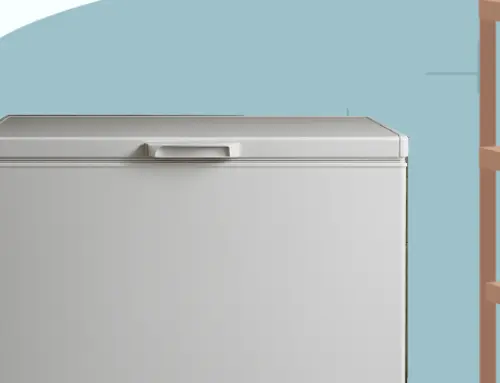Which Is More Efficient: Cooking on an Electric Stove vs. A Gas Stove
by Tyler Castle
17.8 min read

If you’ve ever stood in your kitchen wondering whether to go with a gas stove’s blue flame or an electric stove’s glowing coil, you’re not alone. It is one of those household debates just like choosing central air or window units, or carpet or hardwood. Everyone has an opinion.
But when it comes to efficiency, the answer is not as simple as picking sides. Are we talking about which one heats up faster? Which one keeps your energy bills lower? Or which one is better for your family’s health and the environment?
While this might seem overwhelming, don’t worry, you’re trusted friends at Santanna Energy Services are here to help. With over 35 years of experience as a gas and electricity supplier, and as experts in energy-efficiency, we’ve got you covered with what you need to know.
In this guide, we will cover energy use, cooking performance, costs, safety, and long-term value so that you can make an informed and energy-efficient decision the next time you’re tasked with updating your stove.
Key Points of This Article:
-
Electric stoves are more energy-efficient, transferring about 75% of their energy to your cookware compared to 32% for gas.
-
Gas stoves cost less to operate in most Midwest states due to lower natural gas prices.
-
Induction cooktops are the most efficient option, offering faster cooking and a cooler kitchen.
-
The best choice depends on your energy rates and cooking habits, with Santanna’s Unlimited Energy plan helping keep costs predictable.
What Does “Efficiency” Really Mean?
When people ask which stove is more efficient, they may mean different things. Here are the three main ways we look at efficiency when comparing electric and gas stoves:
- Energy efficiency measures how much of the power you pay for actually heats your food instead of being wasted. For example, gas stoves waste more heat into the air, while induction stoves transfer most of the energy directly into your pan.
- Cost efficiency is what you see on your utility bill each month. Even if gas wastes more heat, it can sometimes be cheaper to run depending on local gas and electric rates.
- Cooking efficiency is how well a stove helps you prepare meals with speed, control, and consistency. This also includes how well the stove matches certain cuisines or techniques.
What Is a Gas Stove?
A gas stove uses natural gas or propane as fuel to create an open flame that heats your cookware. For many families, the sight of that blue flame feels familiar, and it’s one reason why 38% of U.S. households use gas for cooking.
Unlike electric stoves, which rely on heated coils or glass tops, gas delivers heat instantly and can be adjusted with a simple turn of the knob.
How To Cook on a Gas Stove
Cooking on a gas stove is simple. You ignite the burner, place your pan or pot over the flame, and adjust the knob to control the flame size. A larger flame means more heat, while a smaller flame is better for simmering sauces or keeping food warm.
Since heat is coming from an open flame, it is important to use flat-bottom cookware for even cooking and always keep an eye on the flame for safety.
What Is an Electric Stove?
An electric stove uses electrical resistance or electromagnetic fields to heat your cookware instead of an open flame. Most homes with electric stoves use either coil burners or a smooth glass-ceramic top, while newer models may feature induction technology, which uses magnets to heat pots and pans directly.
For direct cooking efficiency, electric stoves are more efficient at transferring energy to food.
How To Cook on an Electric Stove
Cooking on an electric stove is easy but feels different than gas. You turn the knob to heat the coil or smooth-top surface, then place your pan directly on the heating element.
Electric burners may take longer to heat up and cool down, so it helps to preheat your pan and get used to the slightly slower response time. With induction, the pan heats almost instantly, but you’ll need cookware that is magnetic.
Cooking on An Electric Stove vs a Gas Stove: Which Is More Efficient Based on Different Cooking Methods
When it comes to cooking, “efficiency” isn’t just about bills; it’s also about how the stove performs in your kitchen. Homeowners often care most about speed, control, and whether the stove makes everyday cooking easier or harder. Here’s how gas and electric compare in terms of efficiency in real life:
Speed, which heats up faster?
Gas gives quick heat because the flame touches the pan right away. In lab tests, induction is often fastest for boiling and also responds very quickly when you turn the heat up or down. Some smooth top electric ranges can boil faster than comparable gas models, but many traditional coil or radiant elements are slower to heat and slower to cool.
Based on research and our expert opinion, gas ovens are the way to go if you’re looking for efficient speed.
Temperature Control, Flame vs Element: Which Is More Efficient?
When comparing cooking on an electric stove vs a gas stove, when it comes to temperature control, gas is our winner.
Gas lets you see the flame and change it instantly, which helps when recipes need frequent adjustments. Induction also changes heat very quickly, but it might take a smidge longer to heat and isn’t as instant as a gas stove. Electric coil and smooth top elements hold steady once set, but they respond more slowly to changes.
Even Surface Heating and Day-to-Day Cooking
Smooth top electric burners spread heat across the flat bottom of the pan, and many have expandable elements to match pot size, which helps reduce hot spots for foods like pancakes and eggs.
But gas excels at quick changes in heat for sautés and sauces. Think about your routine. If you want a quick response for weeknight stir fries, gas or induction feels easier. If you value steady heat and simple cleanup, an electric may fit better.
Heat in the Kitchen and Wasted Energy
At the burner, induction wastes the least heat into the room, and standard electric generally wastes less than gas. That is one reason kitchens can feel cooler on induction and sometimes on smooth top electric compared with gas for the same task.
Gas stoves lose more heat energy than electric stoves, making them less energy-efficient in the kitchen. However, from a price perspective, it might be surprising to learn that natural gas is actually priced cheaper than electricity. Which means the cost of that wasted energy can still be lower. Meaning cooking with gas often looks more “cost-efficient” on your bill despite the higher heat loss.
In the end, gas and electric stoves both get the job done, but when it comes to efficiency, the right choice depends on how you cook every day. Gas offers speed and flexibility, while electric provides steadiness and consistency.
Cooking on an Electric Stove vs. A Gas Stove: A Snapshot of Their Efficiency
| Cooktop type | Typical efficiency to pan | What it means in practice | Quick notes |
| Electric stoves | about 75% | Less energy wasted than gas | Steady heat, slower to adjust than gas |
| Induction cooktops | about 85% | Most energy goes straight into the pan | Fast boils, cooler kitchen, needs magnetic cookware |
| Gas stoves | about 32% | More heat lost to room air | Great flame control, good ventilation recommended |
How Much Does It Cost to Cook on an Electric Stove and Gas Stove in the Midwest?
Looking for the numbers beyond efficiency? If you're looking to upgrade your system, costs should play a part in your choice.
Based on our estimate, at the national average of 17.47 cents per kWh as of July 2025, (based on projections from the Energy Information Administration), with a model using around 3,410 watts of power, it costs around $0.60 per hour to cook on an electric stove.
Using a 16,500 BTU gas stove at the national average of 12.93 cents per MCF as of February 2025, it costs around $0.21 per hour to cook on a gas stove.
Looking for a cost breakdown specific to your state? Here's what your costs could look like:
Cost to Cook on an Electric Stove for 2 hours Per Day in the Midwest (Rates from July 2025)
| State | Electric rate (¢/kWh) | Cost per hour ($) | Daily cost, 2 h ($) | Weekly cost ($) | Monthly cost ($) | Yearly cost ($) |
| Ohio | 17.52 | $0.60 | $1.19 | $8.36 | $35.85 | $436.13 |
| Pennsylvania | 19.70 | $0.67 | $1.34 | $9.40 | $40.31 | $490.39 |
| Illinois | 18.33 | $0.63 | $1.25 | $8.75 | $37.5 | $456.29 |
| Michigan | 20.85 | $0.71 | $1.42 | $9.95 | $42.66 | $519.02 |
| National | 17.47 | $0.60 | $1.19 | $8.34 | $35.74 | $434.88 |
Cost to Cook on a Gas Stove 2 hours Per Day (Rates from February 2025)
| State | Gas rate | Cost per hour | Daily cost, 2 h | Weekly cost | Monthly cost | Yearly cost |
| Ohio | $36.46 per MCF | $0.58 | $1.16 | $8.12 | $34.78 | $423.19 |
| Pennsylvania | $23.09 per MCF | $0.37 | $0.73 | $5.14 | $22.03 | $268.01 |
| Illinois | $20.35 per MCF | $0.32 | $0.65 | $4.53 | $19.41 | $236.20 |
| Michigan | $17.96 per MCF | $0.29 | $0.57 | $4.00 | $17.13 | $208.46 |
| National | $12.92 per MCF | $0.21 | $0.74 | $5.16 | $22.09 | $268.70 |
Which Stove Saves More on Utility Bills?
Based on the June 2025 rates provided and the 2 hours per day model, gas wins on operating cost in every case.
From a cost perspective, cooking on gas is about $0.39 cheaper per hour than electric, or roughly 65% less expensive at national average rates.
This is true at a state level too. In Ohio, gas is cheaper than electric by about 3% per day. In Pennsylvania, gas is cheaper than electric by about 84% per day. Gas is also cheaper in Illinois than electric by about 92% per day and gas is cheaper than electric by about 149% per day.
Note that your real cost will vary with burner settings, preheating time, cycling, cookware, and how many hours you cook. If you are considering induction, it can cut kWh use further, but the final bill still depends on your cents per kWh.
Electric Stove vs. a Gas Stove: What Are the Pros and Cons of Each?
Choosing between an electric and a gas stove comes down to how you cook, what energy costs look like where you live, and how your kitchen is set up, and efficiency levels.
In short, electric sends more heat to the pan, bakes evenly, and is easier to keep clean, while gas gives instant flame control and can be cheaper where gas prices are low, but it needs good ventilation.
Below are our complete list pros and cons for each so you can choose what fits your kitchen, budget, and safety needs:
Pros of a Gas Stove
- Instant heat control: Gas burners heat up as soon as you light them, which gives you immediate results when starting to cook. This makes everyday tasks a breeze.
- Precise temperature adjustment: You can change the flame size instantly, which helps when cooking meals that require careful control like soups, stir-fries, or sauces.
- Works during power outages: A gas stove can still be used if the electricity goes out, as long as you light it manually with a match or lighter. This is especially useful in areas with frequent storms.
- Even heating for certain cookware: Gas burners spread heat across the bottom and sides of pans, which can make cooking more consistent compared to some electric burners.
- Preferred by many home cooks and chefs: The flexibility of open flame cooking makes gas a favorite for people who love experimenting with different techniques.
- Cheaper to run: As we said above, a gas stove is much more cost effective than using an electric oven by as much as 50%!
Cons of a Gas Stove
- Lower energy efficiency: Only about 40%-55% percent of the energy from gas actually goes into cooking your food, while the rest is lost into the air as heat. This means higher energy waste compared to electric or induction stoves.
- Indoor air pollution: Gas stoves release nitrogen dioxide, carbon monoxide, and small particles into the air, which can reduce indoor air quality if you don’t use proper ventilation. This is especially important for families with children, pets, or elderly members.
- Higher safety risks: Open flames and the possibility of gas leaks make gas stoves riskier to operate. Households must be extra careful to avoid burns, fire hazards, or inhaling gas accidentally.
- Upfront installation costs: If your home does not already have a gas line, installing one can be expensive and time-consuming. This adds to the total cost of switching to gas cooking.
- More cleaning and maintenance: Gas stoves often have grates and burners that collect food and grease, which makes them harder to clean compared to the smooth surface of an electric stove.
Pros of an Electric Stove
- Higher energy efficiency: About 70% of the electricity used in a standard electric stove goes directly into cooking your food, compared to only 40 percent for gas. This means less wasted heat in your kitchen.
- Safer cooking surface: Since there’s no open flame, electric stoves reduce the risk of fire and gas leaks, which makes them safer for families with kids, pets, or elderly members.
- Easier cleaning: Smooth-top electric stoves wipe clean quickly and do not have the grates or burners that gas models require, which saves time in the kitchen.
- Compatible with renewable energy: If your electricity comes from solar panels, your cooking is automatically greener, reducing your household’s carbon footprint.
Cons of an Electric Stove
- Slower heating and cooling: Standard electric burners take longer to reach the desired temperature and to cool down, which can make it harder to control cooking speed. Homeowners may notice this when boiling water or trying to quickly adjust heat levels.
- No cooking during power outages: Unlike gas, electric stoves stop working entirely when the electricity goes out, which can be frustrating in storm-prone areas.
- Higher operating cost in some regions: Depending on local utility rates, electricity can be more expensive than natural gas. This means homeowners in certain states may see higher monthly bills with electric cooking.
- Cookware limitations with induction: If you upgrade to an induction stove, you’ll need magnetic cookware such as cast iron or stainless steel. Non-magnetic pots and pans will not work.
- Potential for surface damage: Smooth-top models can scratch or crack if heavy cookware is dropped on them. Replacing the glass surface can be expensive compared to cleaning or repairing gas grates.

What To Consider Before Choosing an Electric vs. A Gas Stove
After all this, want to know what else to consider when making your choice? A few minutes with these points can prevent surprises on your bill and help you choose with confidence. Here’s what else you should take into account:
- Direct energy transfer: Take into account how much heat actually reaches your pan. Induction is highest, standard electric is in the middle, and gas is lowest, so less heat is wasted.
- Source energy: Electric can be powered by renewables from your utility or home solar. Gas is a fossil fuel burned in your kitchen, which adds (small but) direct emissions indoors.
- Operating costs: Your bill depends on local prices, cents per kWh for electric and dollars per MCF or per therm for gas. In many Midwest areas, gas often costs less to run but always check your current rates.
- Installation: Gas needs a gas line and proper ventilation and adding a line can increase upfront cost. If you don’t already have a gas line in your home. Investing in one just for a gas stove might not be the best choice. On the other hand, electric needs a 240 volt outlet, and induction also needs magnetic cookware.
- Performance: Gas gives instant flame and quick changes in heat, which feels great for searing and stir fries. Electric stoves can heat up quick but it might take a minute to adjust temperatures.
- Cleanliness: Gas grates and burners collect spills and can leave soot on pans. Smooth top electric and induction are easier to wipe clean, and induction keeps the glass cooler during use.
In the End, Choose a Gas Stove if….
- Natural gas is inexpensive where you live, or our tables showed gas is cheaper than electric in your state.
- Your kitchen already has a gas line and a vented hood, and you are comfortable maintaining both.
- You want instant flame control for searing, stir fries, and wok cooking.
- You want the option to cook during a power outage with manual ignition.
- You do not mind extra cleaning of grates and burners, and you will use a CO alarm and good ventilation.
- You are not planning to electrify your kitchen soon and prefer lower operating cost based on current local rates.
Or Choose an Electric Stove if…
- Electricity rates are competitive in your area, or you use a renewable plan or home solar.
- You want cleaner indoor air from the appliance itself, since there is no combustion, and easier wipe clean surfaces.
- Your home does not have a gas line, or you want to avoid the cost of adding one.
- You are fine using alternative cooking options during outages, or you have a backup like a countertop appliance.
- You want the simplest safety profile for households with kids, pets, or older adults.
- You are open to induction for the fastest boils, precise control, and the highest cooktop efficiency, and you have magnetic cookware.
Energy-Saving Tips for a Gas Stove
- Match pan size to burner. A small pan on a big flame wastes gas.
- Keep flames under the pan. If the flame goes up the sides, you are wasting heat and fuel.
- Use lids when possible. Covered pots boil faster and use less gas.
- Turn down after boiling. Once water or food reaches temperature, simmer instead of keeping high heat.
- Keep burners clean and adjusted. A steady blue flame means efficient burning.
- Cook on back burners under the hood. Range hoods capture back burners better, removing more fumes.
- Vent properly. Use a vented hood or open a window to clear out carbon monoxide and nitrogen dioxide.
- Upgrade old pilots. If your stove has a standing pilot light, switching to electronic ignition saves gas year-round.
Energy-Saving Tips for an Electric Stove
- Match pan size to the radiant ring or coil. A small pan on a large element wastes electricity.
- Use flat bottom, heavy cookware. Full contact heats faster and more evenly on smooth tops.
- Preheat only when the recipe requires it. Avoid long preheats to save energy.
- Turn the burner off a little early. Finish cooking on the element’s residual heat.
- Keep the glass top, coils, and drip pans clean. Clean surfaces transfer heat better.
FAQs
Do you need special pans for electric or induction stoves?
Standard electric (coil or smoothtop) works with most flat-bottom cookware. Induction needs magnetic cookware. A quick test is if a magnet sticks to the pan bottom.
Do I need a gas line to install a gas stove?
Yes, you need natural gas or propane service plus a standard 120 V outlet for ignition and controls. Hire a qualified installer and follow local code.
Do gas stoves really waste more heat?
Yes at the burner. Induction is up to three times more efficient than gas, and conventional electric is also more efficient than gas.
Can I switch from a gas stove to an electric stove easily?
You will need a 240 V circuit for an electric or induction range, which many gas-only kitchens do not have. Plan for an electrician to add the circuit.
Which is safer in a power outage?
Electric stoves do not work without power. Many gas cooktops can be lit with a match, but some models and most modern gas stoves will not operate because their igniters and controls need electricity.
Which stove lasts longer?
Typical life is about 10 to 15 years for gas stoves and about 13 to 15 years for electric ranges.
Are gas stoves going to be banned in the U.S.?
There is no nationwide ban. DOE has updated efficiency standards for new cooking products. Some places, such as New York State, require most new buildings to be all-electric starting in 2026, while other local gas-hookup bans have faced federal preemption challenges.
There is no single winner for every home. At the burner, electric is more efficient than gas, and induction is the most efficient of all. On the bill, the cheaper fuel in your state often wins. Safety and indoor air are simpler with electric. Gas offers instant flame control and can be very affordable where gas prices are low. The right choice comes down to your local rates, how you like to cook, and how you plan to future proof your kitchen.
If you want predictable budgeting, pair your choice with a plan that keeps costs steady. Santanna’s Unlimited Energy electricity and natural gas plan gives you a stable monthly supply charge* for your home’s energy, which helps prevent surprise spikes when you cook more or run appliances harder in extreme seasons. That means less stress about usage and more peace of mind for your family.
Ready to make your supply costs predictable and your planning easy? Explore Santanna’s Unlimited Energy plan here.
* Restrictions apply. Enrollment based upon program eligibility. Customers using more than 125% of normal monthly usage as determined by Santanna may be required to switch plans.
Tyler is an experienced energy professional, having worked for Santanna Energy Services, for the past four years. He is passionate about renewable energy and believes that diversifying the energy grid is the key to a sustainable future. Tyler is dedicated to supplying consumers with the best possible energy solutions and works diligently to make sure that Santanna can deliver the highest quality service.







